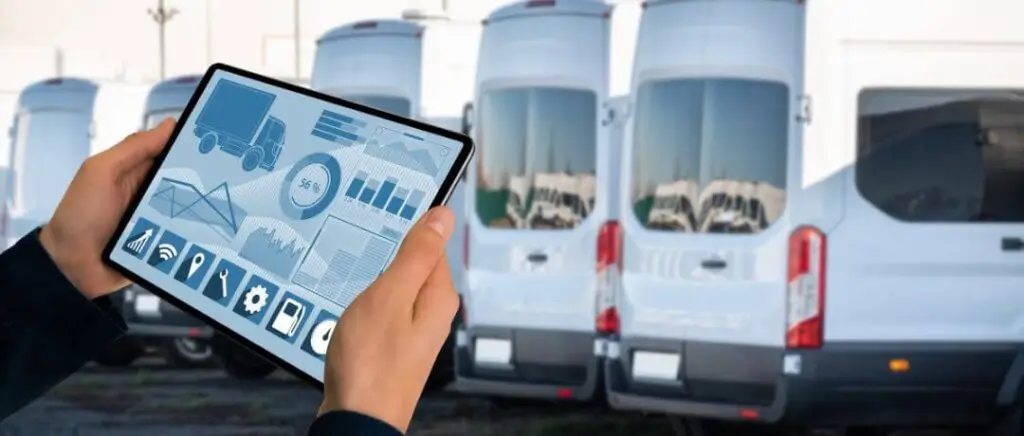Workplace recharging: a value-added service for your employees, but a substantial investment
According to a recent study by the Observatoire de la Mobilité Électrique, 85% of companies have installed charging stations for their employees, in response to growing demand and government incentives. What's more, 78% of employees consider the presence of charging stations to be an important criterion in their choice of employer. Companies offering on-site recharging solutions reported a 40% increase in employee satisfaction and a significant reduction in transport-related costs.
By making charging stations available to them, you can save them the hassle of searching for available stations on the way to and from work. They'll save precious time and arrive at the office much less stressed!
This approach will also make up for the shortcomings of the public network. Even if sustained efforts to deploy charging stations point to better coverage in the years to come, the exponential increase in the number of electric vehicle drivers (linked in part to theban on the sale of new combustion-powered cars in Europe from 2035) also requires the deployment of private infrastructures.
Nevertheless, any company wishing to install charging stations for electric vehicles needs to consider the financial aspects. The average price of a charging station is between 700 and 1,500 euros. Added to this is the cost of installation by an IRVE-certified electrician, any civil engineering work and electrical upgrades, and associated services (maintenance and supervision). The budget can quickly reach several thousand euros, depending on the number of charge points to be deployed and the technical aspects mentioned above.
In this context, anticipating the amortization of charging stations is essential. Charging your employees for recharging is a simple and practical way to make the most of your investment. What's more, it's possible to set up a flexible billing model, whether you decide to charge your employees for part or all of their charging. Depending on your objectives, several options are available.
Free or paid refill?
Of course, you can also make the charging stations in your parking lot available to your employees free of charge. In this case, you won't get any money back, but you will benefit from a number of intangible advantages for ..:
- optimize theemployee experience Your employees will certainly appreciate being able to recharge their vehicles during working hours, giving them greater autonomy and free time. What's more, if this service is free, they'll think twice before leaving your company!
- develop your employer brand Attracting talent is not only a growth factor for your company, but also a major competitive advantage. Over and above the salary and traditional benefits that can attract candidates' attention, free top-ups are an excellent way of enhancing your working environment and making it even more attractive.
- reaffirm your CSR policy your CSR policy: stand out from your competitors by reducing the negative impact of greenwashing. Offering self-service charging stations is a concrete way of reducing your company's environmental impact. This effort will also help you better comply with the tertiary decreeintroduced in 2019 to reduce the energy footprint of commercial buildings with a surface area of 1000 m2. If you are concerned, you must declare all your energy consumption every year on the OPERAT platform. Energy used for recharging electric vehicles is deductible from this declaration.
- encourage your employees to back to the office Since the Covid pandemic and the democratization of telecommuting, it has become more difficult for employers to value face-to-face work. Allowing your employees to recharge their vehicles on site can encourage them to visit your premises more often.
Did you know? The use of a charging station without financial consideration is considered a benefit in kind (AEN). However, a special regime is in place until December 31, 2024. According to the French Labor Codethe benefit in kind "resulting from the use of a charging station installed in the workplace [...] for non-professional purposes is valued at zero, including the cost of electricity". In other words, your employees will not be taxed on the use of your charging stations.
Good to know : Is your parking lot or parking area open to the public? You can recoup the cost of your charging stations by charging external users (visitors, customers) without charging your employees. This is an excellent way of combine intangible and tangible benefits.
If you want to pass on the cost of recharging to your employees, you first need to find out whether this is legally possible. In large organizations, the advance or reimbursement of recharging costs (in the same way as fuel costs for internal combustion vehicles) is generally covered by company or inter-company agreements. It is advisable to check whether or not the provision of charging stations falls within this framework. If there is no agreement, the employer is free to charge the cost of recharging his employees' personal electric vehicles, after obtaining the approval of the social committee (CSE).
If you are in a situation where you can re-invoice the recharge to your employees, you must first define the most suitable most appropriate billing model.
Our Beev experts will propose an offer tailored to your needs and projects.
Apply now!
How do I bill for the refill?
Charging sessions can be invoiced by timeper kWh of electricity consumed or by flat rate. Each model has its own advantages.
Time-based billing
This invoicing method is of interest to companies with a limited number of charging stations in relation to the number of electric vehicle drivers. This situation may be transitory, when the installation project has not been fully finalized (for example, if parking spaces are equipped progressively, as regulations change). But this situation is also common when companies make charging stations available to visitors or the public.
Time-based charging has one major advantage: it encourages users to vacate the charging station more quickly once the charge has been completed. On the other hand, it is less equitable, as users whose vehicles recharge slowly are penalized.
kWh billing
kWh billing can be used by all types of business. It's the fairest model for users, who only pay for what they actually use. It also offers greater transparency for the terminal operator, who can assess the financial added value of each charge in relation to energy costs. Unlike time-based billing, it does not encourage users to leave the charging station once they have finished recharging. However, there are alerts to warn the driver at the end of a session.
Flat-rate billing
Simple to implement, this billing model involves setting a fixed price for a refill. The rate is set arbitrarily by the company, for example in the form of a monthly subscription. This method of invoicing is not considered fair, as it is uncorrelated with actual consumption, and does not take into account the employee's time off (vacation, telecommuting or travel).
How do you manage billing?
As we've just seen, there are several models available for invoicing recharges carried out by your employees at your charging stations.
However, it is still necessary to obtain information on consumption or time of use in order to establish a transparent and honest tariff. This objective is made possible by the use of connected or "intelligent" terminals, which can communicate remotely to share data on their operation and occupancy.
The information collected is grouped together in a supervision system, accessible via a secure web interface.
The advantages of a supervision tool are numerous:
- Remote control of equipment Remote control: this function enables charging stations to be fully controlled from an online platform. You can check the availability of a charging station in real time, obtain the status of a charge to see if it is about to end, or generate alerts for users (time remaining or charging interruption).
- Set up user profiles Companies wishing to lock out or restrict access to certain users can implement an RFID identification system. In this way, kiosks can only be accessed by users with a badge.
- Automate invoicing Automated invoicing: invoicing is one of the main obstacles for managers who don't want to complicate their financial management. Automation enables reliable retrieval of consumption data. It saves precious time, especially for companies that are implementing partial invoicing. You'll be in this situation if you charge only 50% of the charge and pay for the remaining half.
- Facilitate maintenance Detect a fault or malfunction immediately, so you can schedule an intervention as quickly as possible, and avoid interruptions that can be harmful to your employees.
Depending on your requirements, the supervision tool can be configured to implement predictive maintenance or to generate annual maintenance reminders.
Supervision tool: how much does it cost?
The cost of the supervision service is defined for each chargepoint (or chargepoint in the case of dual chargepoints). It may vary according to specific needs, such as dedicated assistance. These parameters can be defined upstream of the project and evolve as necessary.
Beev's billing tool is particularly comprehensive. It brings together all the information you need to control your charging stations and manage billing, in an intuitive intuitive dashboard. It costs €250 per year per charging point. Find out more about our supervision tool
For more information, we've put together a guide to this topic to explore the different aspects in depth:
Read our article about :
Now you have an overview of the billing options available to you to make the most of your charging stations. Do you have any other technical questions about installing a charging point in your company? Make an appointment with a Beev advisor for clear, precise answers to your questions.
If you would like to find out more aboutsupport for the installation of charging stations for private individuals in 2024please consult our article on the subject.

































